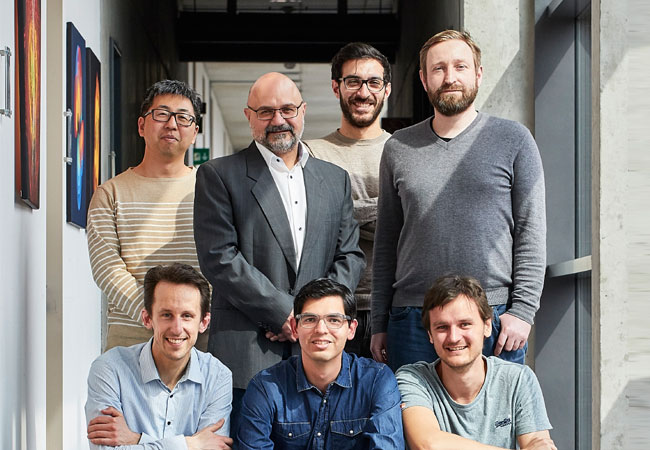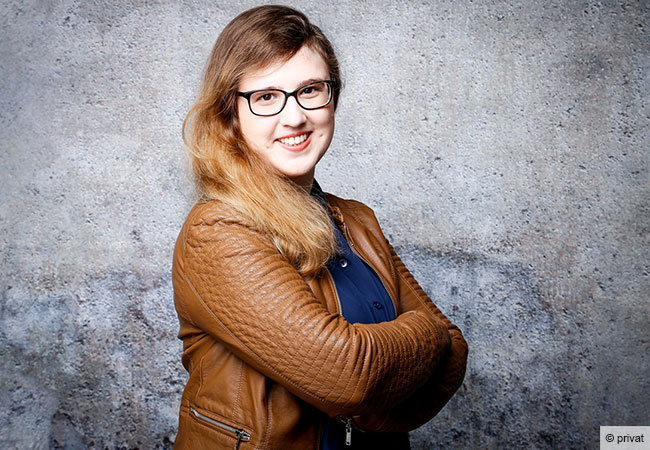
Professor Luciano Rezzolla and his team, together with 347 researchers from the worldwide Event Horizon Telescope Collaboration, have been awarded the Breakthrough Prize 2020 in recognition of their ground-breaking achievements
For their exceptional and fundamental achievements in capturing the first direct image of a black hole, researchers from the team headed by astrophysicist Professor Luciano Rezzolla of Goethe University, together with 347 scientists from the global Event Horizon Telescope Collaboration, will receive the Breakthrough Prize 2020, which comes with $ 3 million in prize money. With its 10 members, the Goethe University team is one of the largest in the entire collaboration, which comprises 140 institutions in total.
With the aid of eight radio telescopes around the world, to which meanwhile another three have been added, the scientists succeeded in capturing the first direct visual evidence of the supermassive black hole at the centre of the galaxy Messier 87 in April 2019. The prize will be distributed equally among all the co-authors of the corresponding scientific publications, and will be awarded on 3rd November.
Luciano Rezzolla’s team made fundamental contributions to the theoretical
interpretation of the results throughout all phases of the observations: using
supercomputers, they simulated how material forms a ring-shaped disc as it
orbits and is pulled into the black hole, and how the tremendous gravitation
bends light rays around the black hole. It was also necessary to rule out
various alternatives to black holes that are also compatible with the theory of
relativity. “The confrontation of theory with observations is always a dramatic
moment for a theoretical physicist. We were quite relieved, and also proud,
that the observations matched our predictions so well,” states Luciano
Rezzolla.
Goethe University President Professor Dr. Birgitta Wolff: “Together with Luciano Rezzolla and his team, we are delighted about this important global award. We warmly congratulate all of our colleagues who contributed to this achievement! We remember the enthusiasm of audience in the packed lecture hall on Campus Riedberg when Luciano Rezzolla and his colleagues from the European Consortium (Professor Michael Kramer from the Max Planck Institut für Radioastronomie in Bonn and Professor Heino Falcke from the Dutch Radboud University) first presented the results of their joint research at Goethe University on 17th April 2019. It was a celebration of the power of fascination emanating even from abstract science. I hope that further ground-breaking research will be forthcoming from this great global collaboration.”
Goethe University Vice-President Professor Simone Fulda, who is responsible for research, said: “We are proud to have played such a prominent role as Goethe University in a true scientific breakthrough of global significance and congratulate Luciano Rezzolla and his team for the outstanding achievements that led to it. Physics is an important research focal point that has shaped Goethe University’s research profile for many years.”
“It’s a great honour and an enormous gratification to see that the work done at Goethe University has received the highest recognition and has contributed to pushing the limits of our understanding of fundamental physics. It is also a fair recognition of what has ultimately been a team effort and hence a shared burden and challenge of many scientists across the world,” commented Luciano Rezzolla.
As a collective, this year’s Breakthrough Prize laureates probed the galaxies to capture the first image of a black hole. The jury has found remarkable the achievements by combining telescope after synchronizing them with atomic clocks, producing a virtual telescope as large as the Earth, to obtain unprecedented resolution. The image of the supermassive black hole at the centre of the Messier 87 galaxy was obtained after painstakingly analysing the data with novel algorithms and techniques, and reveals a bright ring marking the point where light orbits the black hole, surrounding a dark region where light cannot escape the black hole’s
gravitational pull. The black hole shadow matched the expectations of Einstein’s theory of General Relativity.
Collaboration Director Shep Doeleman of the Harvard-Smithsonian Center for Astrophysics, who will accept the prize on behalf of the collaboration at the ceremony on 3rd November 2019, says: „We set out to see the unseeable, and we needed to build a telescope as large as the Earth to do it. It sounds like science fiction, but we assembled an incredible global team of experts and used the most advanced radio telescopes on the planet to make it a reality. This breakthrough prize celebrates a new beginning in our study of black holes.“
The “Breakthrough Prize Foundation” has prominent backers. Its founding members are Sergey Brin, Priscilla Chan and Mark Zuckerberg, Ma Huateng, Yuri und Julia Milner, and Anne Wojcicki.
Further information:
Press release on the image of the black hole from 10th April 2019: http://www.goethe-university-frankfurt.de/77266126/Astronomers_capture_first_image_of_a_black_hole
Film material on the black hole (Simulations and background on the research at Goethe University) can be found here:
https://youtu.be/l6iuC1I3mHo: How we made the black hole visible. Short version
https://youtu.be/vrHL61cHAnA: How we made the black hole visible. Long version with personal statements
https://youtu.be/_AOtZxUsfAw: Simulations of the shadow of a black hole (English)
https://youtu.be/i1VJw3aj664: Simulations of the shadow of a black hole (Spanish)









